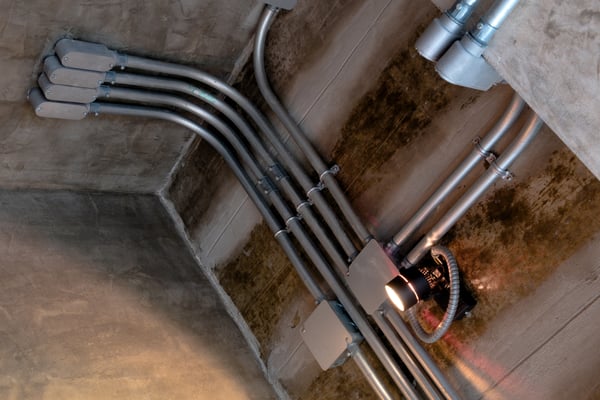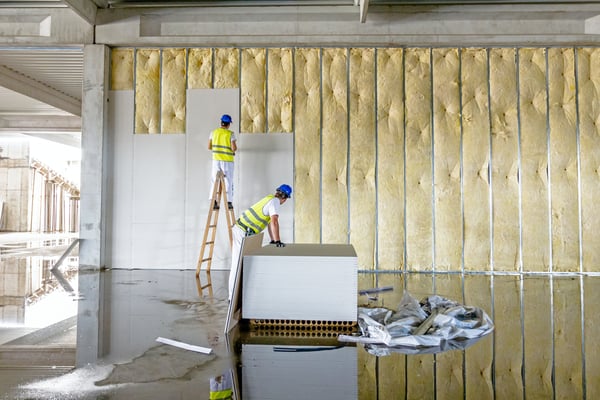Mechanical, electrical and plumbing (MEP) systems are very important in modern buildings, as they create an indoor environment suitable for human occupation over long periods. However, MEP installations represent a large fraction of construction costs and represent more than 30% of the budget in many construction projects.
Fortunately, there are many ways to reduce the cost of MEP systems without affecting performance. With smart design decisions, it may even be possible to cut costs and improve some aspects of the project all at once. Energy and water consumption is also largely determined by the MEP Project and professional engineering services can save thousands of dollars in utility bills every year.
Get a professional MEP project, reduce installation costs, and save energy and water.
In this article, we will discuss four effective strategies for reducing the cost of MEP installations. As a real estate developer, it is in your best interest to complete construction with few or no change orders. However, there are other ways to reduce costs that are less obvious at first.
Tip #1 – Involve contractors and equipment suppliers from the beginning

Many change requests are the result of poor communication. For example, if the dimensions and installation requirements of a piece of equipment are incorrectly assumed, costly changes may be necessary during the construction phase. By involving all parties from the beginning, design requirements are clear and surprises are avoided.
Clear communication is especially important when using prefabrication and modular construction. In this case, the building is assembled from prefabricated components that are delivered to site, often with integrated MEP systems. Although this construction method is faster, there is less flexibility for modifications once the modules are completed.
Technology can simplify coordination between parties involved in a construction project. For example, modern design software allows simultaneous work on the same building model, and conflicts between components can be detected and notified immediately. There are also project management platforms to complement design software, which include useful features such as cloud-based file sharing.
Tip #2 – Optimize the layout of MEP installations

MEP installations have many components, but those that take up the most space are often hidden. For example, a typical commercial building will have thousands of feet of conduits, pipes, and air ducts hidden behind walls and ceilings. With conventional 2D design software, finding an efficient layout for all these systems is a challenge, even for experienced engineers. However, when the design is taken to a 3D environment like Revit the layout of MEP systems can be optimized more easily.
An inefficient MEP layout generates two types of expenses: more materials and more qualified labor. With every foot or conduit, pipe or duct eliminated from the project, the project becomes cheaper.
Involving contractors and suppliers from the beginning (Tip #1) helps achieve this goal. When the locations, dimensions and installation requirements of MEP components are clearly known, architects and design engineers can focus on finding the ideal layout. On the other hand, finding an efficient MEP layout is more difficult when information is provided gradually and the design is modified many times.
Tip #3 – Improve the building environment to reduce HVAC workloads

Boilers, refrigerators and other types of large HVAC equipment are among the most expensive MEP components in construction projects. However, the price of these units is largely determined by their rated capacity. There is a common misconception that having oversized equipment is a good thing, but you are actually spending more than necessary. Furthermore, oversizing makes maintenance more expensive.
When a building has an efficient thermal envelope , it conserves interior heat more effectively during the winter, while also blocking exterior heat during the summer. Compared to a building that has the minimum insulation required by code, this building can maintain a comfortable temperature with less heating and cooling. As a result, HVAC equipment can be scaled down, reducing initial costs.
Tip #4 – Plan the project carefully and in advance

Lack of planning can make a project more expensive, even if you have a professional design and an experienced contractor.
- For example, if there is a lot of construction activity when you start the project, you may be slowed down by a lack of qualified labor.
- You may be forced to pay overtime if there is a tight deadline to meet, making the project more expensive.
- On the other hand, if spikes in construction activity are anticipated, your contractor may increase project staffing in advance.
There are also seasonal factors that you should consider when planning the project. For example, if you plan to install an air conditioning system just before the summer months, HVAC installers may be busy with projects in multiple buildings.
With proper planning, you can prepare for shortages of materials and skilled labor. If these factors are not considered upfront, they can make your project more expensive and delay completion.

